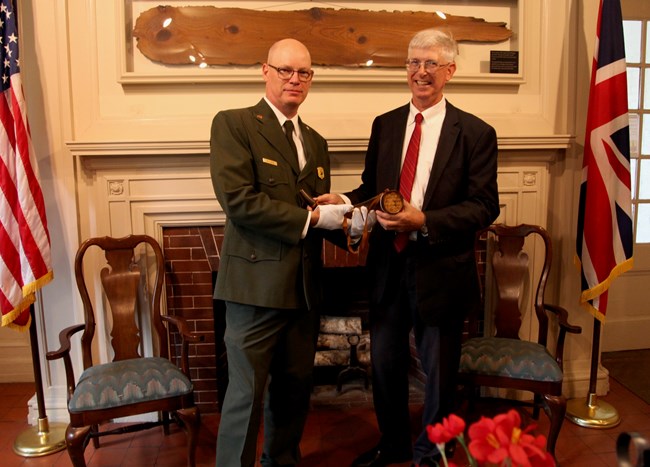Last updated: July 18, 2024
Article
Willard Buttrick Powder Horn


On April 19, 1775, Willard carried this horn into battle at Concord’s North Bridge, just feet below his house. Fortunately Willard and his powder horn survived the day. For more than two centuries following the American Revolution, the Buttrick family passed down Willard’s horn from generation to generation. The horn even made an appearance at the centennial celebration of April 19 in 1875 along with other significant objects. It was donated to Minute Man National Historic Park by Marshall Adams Buttrick on behalf of the Buttrick family in 2018.

Marshall Buttrick, spokesperson for the Buttrick family and the official keeper of the powder horn, had spent many years, proudly showing the powder horn off and keeping it’s story a part of Buttrick lore. "I am pleased to donate to the National Park Service my ancestor Willard Buttrick's powder horn to be publicly displayed at the North Bridge Visitor Center. The powder horn was used at the North Bridge April 19th 1775. It is interesting to note that the remains of Willard Buttrick's house foundation are adjacent to the parking area at the Visitors Center. " said Marshall Buttrick.
When Mr. Buttrick and his siblings had to decide what the future of the powder horn would be, it was unanimous that the horn should be seen by the American public and the best way to do that would be to donate it to the park. Now, the personal story of the day will be displayed in the near future for all to understand and enjoy what the artifact can tell us about a patriot from almost 250 years ago.
